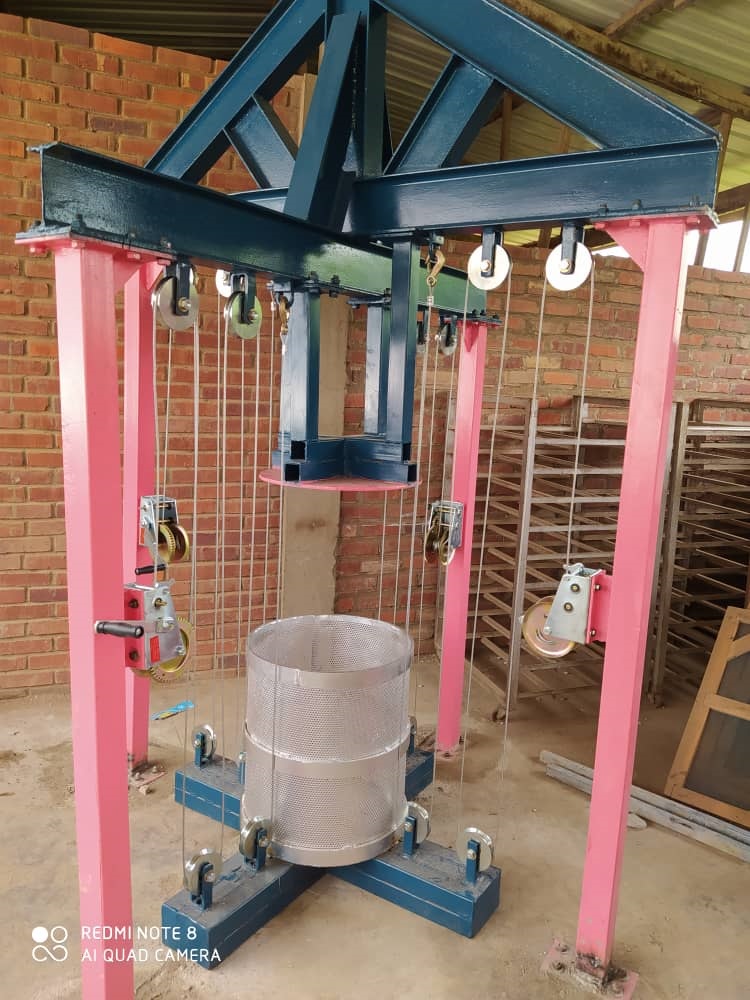NRI experience in improving cassava production and value addition in sub-Saharan Africa has focussed on many steps along the value chain, from farm to fork. As fresh cassava roots are highly perishable and must be consumed or processed within 72 hours after harvesting, much of the processing takes place in villages on a small scale.
 To process cassava into flour, fresh cassava roots are peeled by hand, washed manually, grated using an abrasive drum, dewatered using a hand-operated press, then the mash is pulverised with a grater, then dried using different types of dryer or drying techniques. Once dried, the cassava is milled into flour. However, most of the industrial cassava processing technology that is currently available is not suitable for village-based agro-processing.
To process cassava into flour, fresh cassava roots are peeled by hand, washed manually, grated using an abrasive drum, dewatered using a hand-operated press, then the mash is pulverised with a grater, then dried using different types of dryer or drying techniques. Once dried, the cassava is milled into flour. However, most of the industrial cassava processing technology that is currently available is not suitable for village-based agro-processing.
NRI’s Dr Marcelo Precoppe, a Crop Postharvest Technologist with expertise in the engineering design process, has been focusing on the dewatering stage of cassava processing – the mechanical removal of liquid from grated cassava – as this is a major bottleneck in the operation. Solving this bottleneck reduces postharvest losses of cassava, and technical improvements lower costs and increase efficiency.
Mechanical dewatering is a particularly important step in cassava processing and can lead to substantial fuel savings. The alternative is to remove water from food materials by thermal evaporation which is an energy-intensive process, due to the high latent heat of water vaporization.
However, part of the water can be removed by inexpensive nonthermal processes, like mechanical pressing or centrifugation. In Africa, mechanical dewatering of cassava is mostly done with a screw- operated or jack-operated press – an operation that entails a large amount of hard physical work by the village processors, the throughput is low, and it usually takes one hour to press 100 kg.
Undertaken as part of the CGIAR Research Program on Roots, Tubers and Bananas, Dr Precoppe has been developing an innovative press for dewatering cassava. To replace the traditional mechanical presses, the team first developed a model using chain hoists.
The grated cassava is inserted into bags and the bags are placed into a metal ‘basket’. The basket is lifted off the ground with the aid of chain hoists, and as the basket rises, the grated cassava is pushed against a stationery metal press above it, and the liquid is released through holes.
The press is easy to use, does not require physical strength and it can process 500 kg in one hour. The success of this first model prompted requests from the collaborators for a smaller and more affordable press. To reduce costs, the team replaced the chain hoists with easy-to-use hand winches, and the machine was properly dimensioned using a Discrete Element Method (DEM), to ensure optimum design and efficiency of the finished equipment.
The project was carried out in collaboration with partners and cassava processors in Ghana, where the prototype presses were built and are being tested. The machinery is receiving positive feedback from the equipment manufacturer and processors and has the potential to make substantial fuel savings.
To find out more about:

